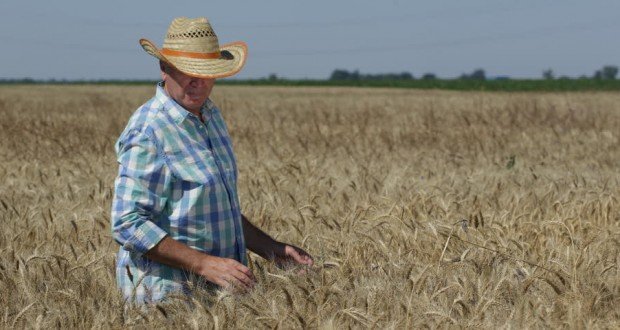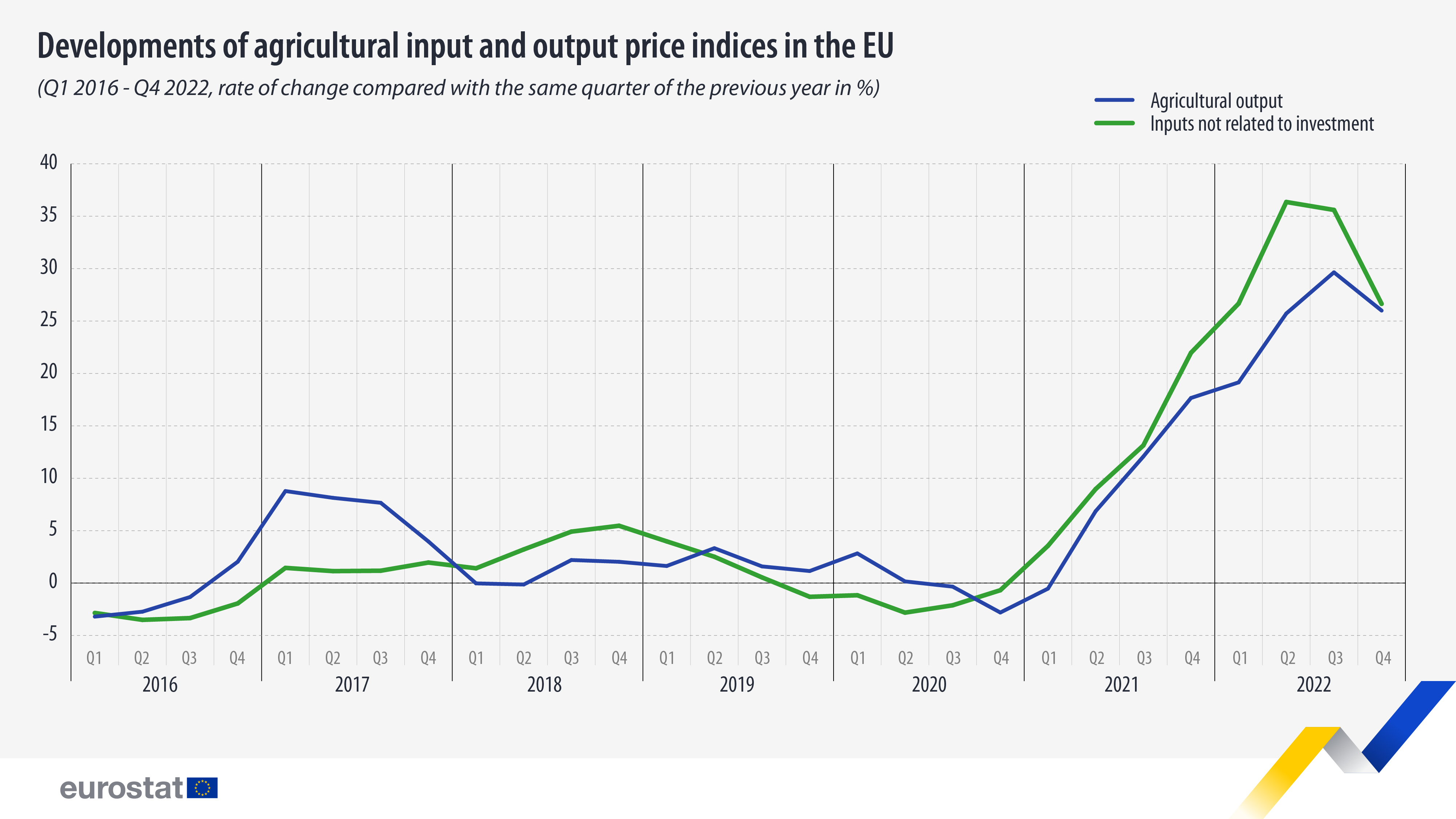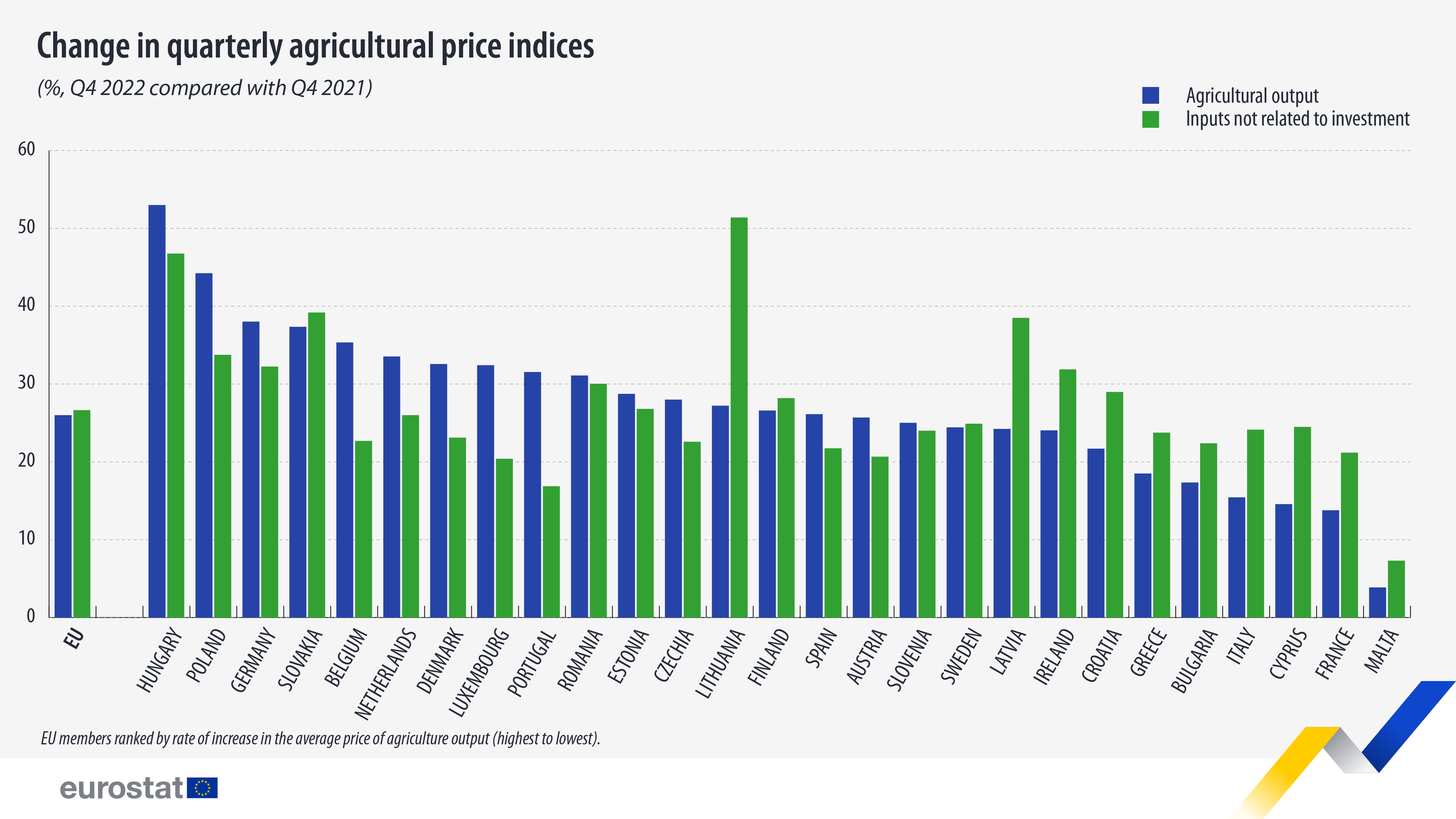March 30, 2023
The Russian invasion of Ukraine has significantly disturbed global agricultural markets in 2022. Russia and Ukraine had been major exporters of grains, wheat, maize, oilseeds (particularly sunflowers) and fertilisers until the war started. Eurostat data shows sharp price increases for agriculture in all quarters of 2022, peaking in the second and third quarters (Q2 and Q3). However, during Q4, a slight deceleration of price increases was observed for both agricultural products and inputs.
Between the fourth quarter of 2021 (Q4 2021) and the fourth quarter of 2022 (Q4 2022), the average EU price of agricultural products as a whole (output) rose notably (+26%) for the same ‘basket’ of products. However, this represented a lower rate of increase compared with the previous quarter’s rate of change (+30% between Q3 2021 and Q3 2022). There were particularly strong price increases noted for eggs (+64%), pigs (+52%) and olives (+51%).
Over the same period, the average price of goods and services currently consumed in agriculture (i.e., inputs not related to investment) for the EU as a whole increased by 27% for the same ‘basket’ of inputs, which was a lower rate of increase than the one recorded between Q3 2021 and Q3 2022 (+36%). Within this basket, there were considerable price hikes recorded for fertilisers and soil improvers (+55%), energy and lubricants (+41%) and animal feeding stuffs (+29%).
This information comes from data on agricultural price indices published by Eurostat today.
In every EU country, the average price of both inputs not related to investment and agricultural output increased between Q4 2021 and Q4 2022.
The sharpest rates of increase in the average price of agricultural output over this period were observed in Hungary (+53%), Poland (+44%) and Germany (+38%). The lowest rates of increase were noted for Malta (+4%), France (+14%), Cyprus and Italy (both +15%).
The sharpest rates of increase in the average price of inputs not related to investment were recorded in Lithuania (+51%), Hungary (+47%) and Slovakia (+39%). The lowest rates of increase were observed in Malta (+7%), Portugal (+17%) and Luxembourg (+20%).
Source: Eurostat
Legal Notice: The information in this article is intended for information purposes only. It is not intended for professional information purposes specific to a person or an institution. Every institution has different requirements because of its own circumstances even though they bear a resemblance to each other. Consequently, it is your interest to consult on an expert before taking a decision based on information stated in this article and putting into practice. Neither Karen Audit nor related person or institutions are not responsible for any damages or losses that might occur in consequence of the use of the information in this article by private or formal, real or legal person and institutions.








